September 7th, 2024
8minute read
It was 1968, and I was not yet three years old.
I recall that his face was scratchy as I clung on for dear life.
I looked up and spied three delta-shaped airplanes at extreme altitude, each producing four distinct contrails.
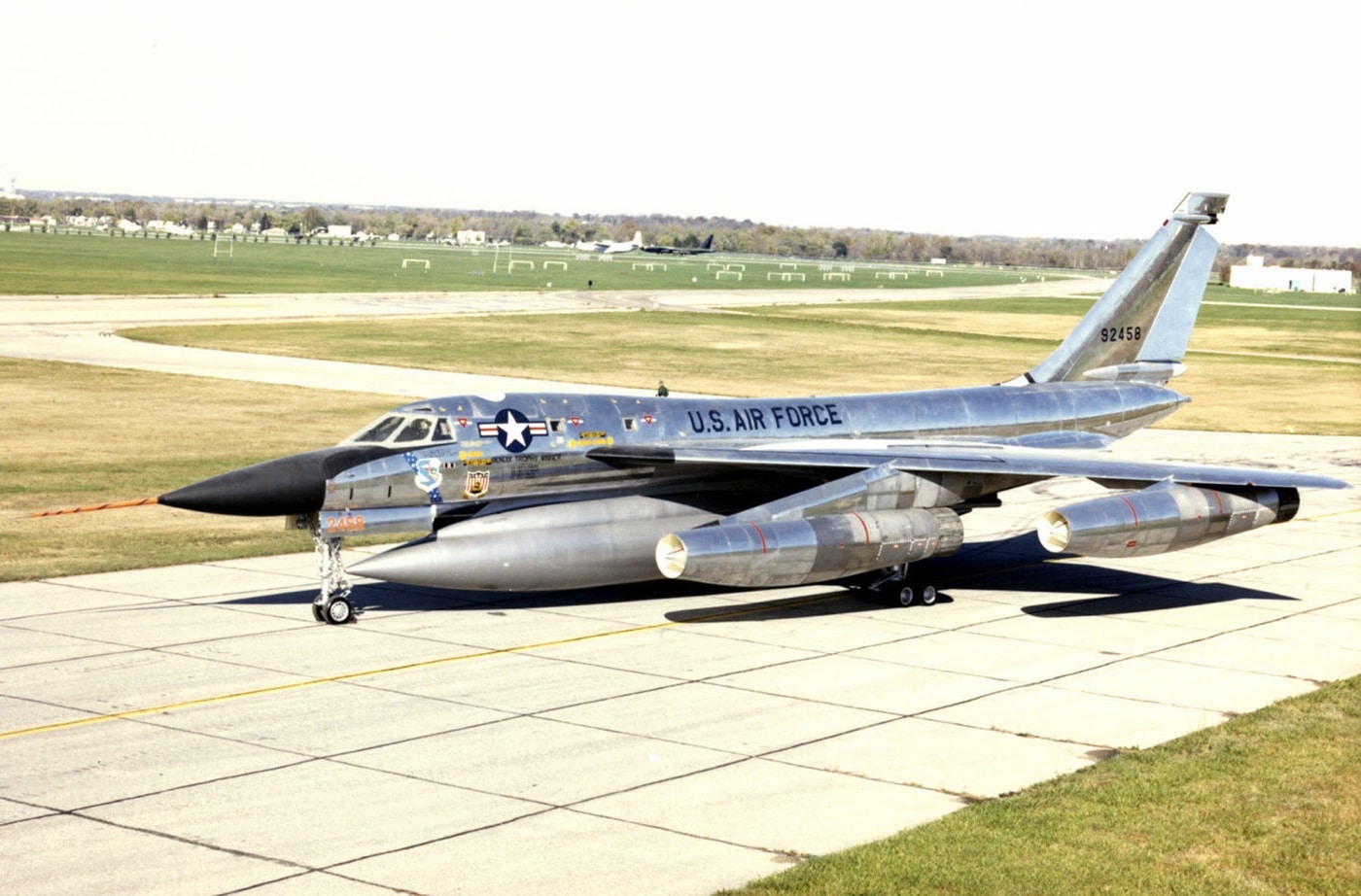
A Convair B-58 Hustler strategic bomber on the runway with a nuclear weapon, a B53 nuclear bomb, in a MB-1C centerline canister. Image: U.S. Air Force
Even today, some 56 years later, I remember that image clearly.
Back then, sonic booms over occupied spaces were clearly still a thing.
That was also my initial introduction to the extraordinary Convair B-58 Hustler.
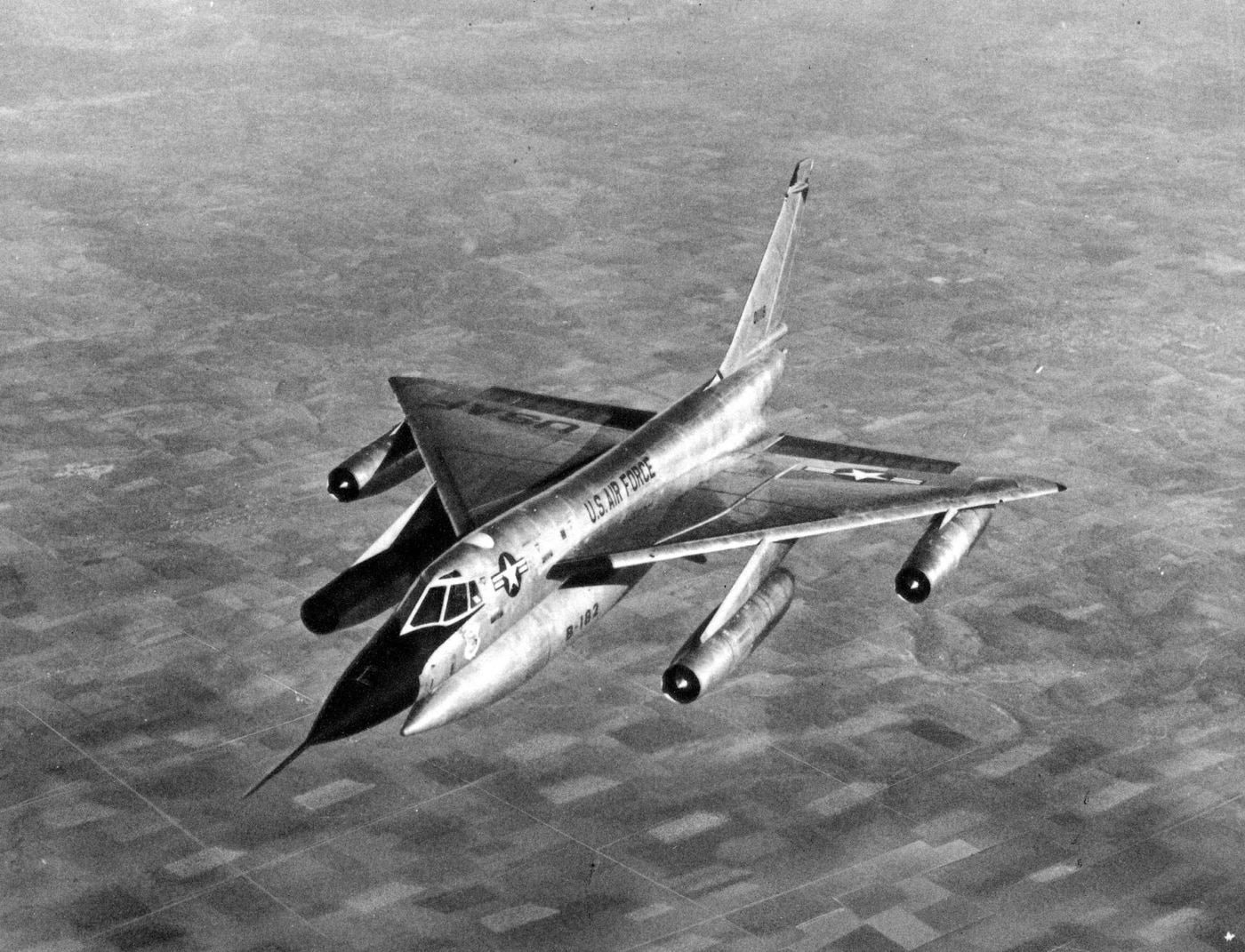
A Convair B-58 Hustler strategic bomber during a training flight. B-58 training missions frequently were made with B53 nuclear bombs. Image: U.S. Air Force
Origin Story of the B-58 Hustler
The B-58 Hustler was a child of the Cold War.
The Hustler was intended to end the world.
The Hustler could easily make Mach 2 at 70,000 feet.
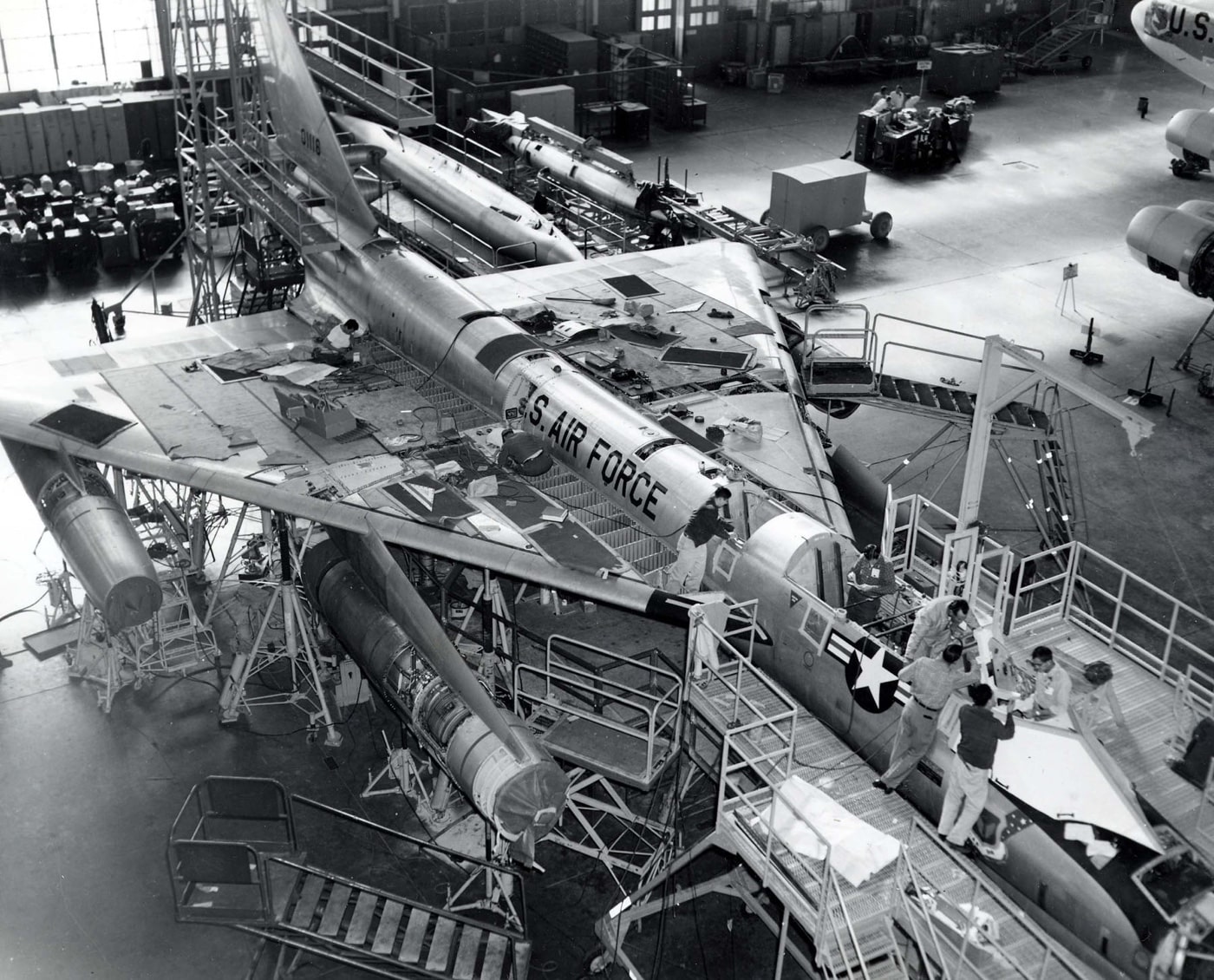
Shown here is a Convair B-58 Hustler under construction. The design was an aerospace marvel built for a world-ending mission. Image: U.S. Air Force
The B-58 was nonetheless still an incredible feat of engineering.
First flown in 1956, the Hustler entered squadron service four years later in 1960.
This inimitably sleek airplane served as a critical part of Americas nuclear triad for the next decade.
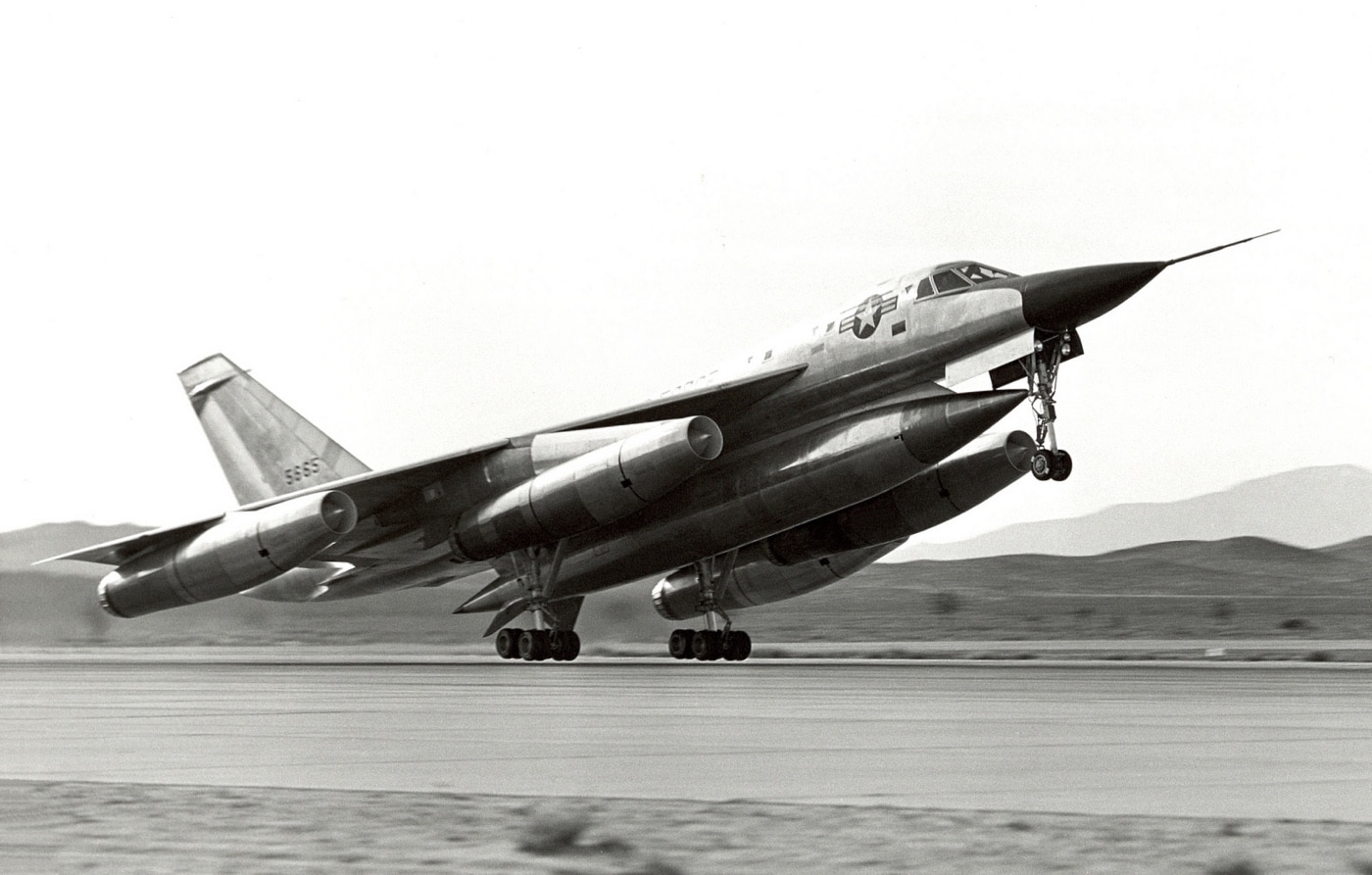
The B-58 Hustler, the world’s first Mach 2 bomber, was tested at Edwards Air Force Base, Calif., in the late 1950s and early 1960s. It is shown taking off here. Image: U.S. Air Force
Design Parameters for the Strategic Bomber
The B-58 was designed solely for speed.
Maneuverability, crew comfort and even safety ran a distant second to raw rarefied velocity.
The plane was legendarily difficult to fly.
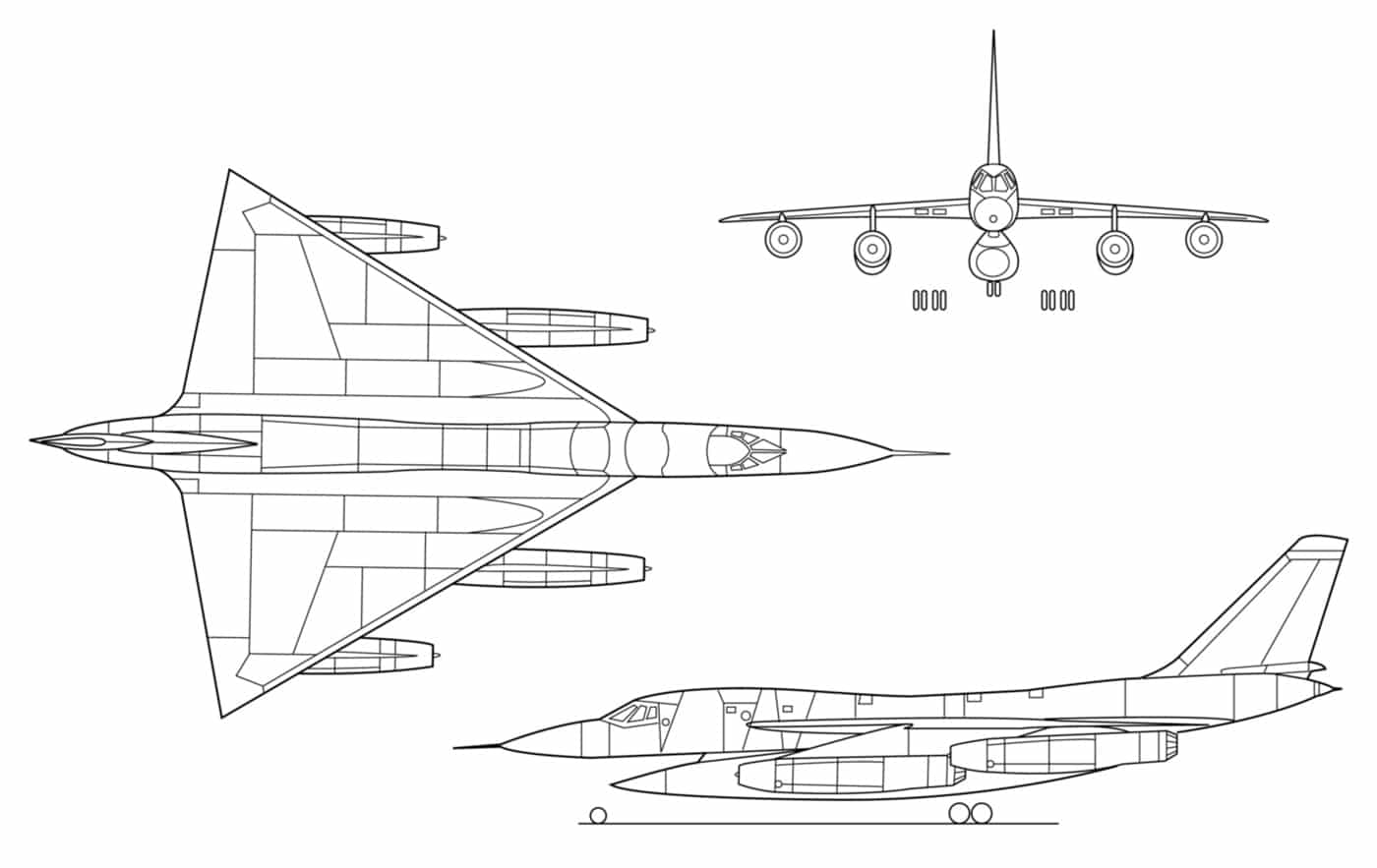
Shown here is an engineering drawing of the Convair B-58 Hustler. The delta wing configuration was used by many supersonic aircraft of the era. Image: NASA
A total of 24 of the 116 Hustlers produced were lost to crashes a 21% loss rate.
The B-58s design reflected this hotrod ethos.
The wings sported a 60-degree sweep and were intentionally thin so as to minimize drag.
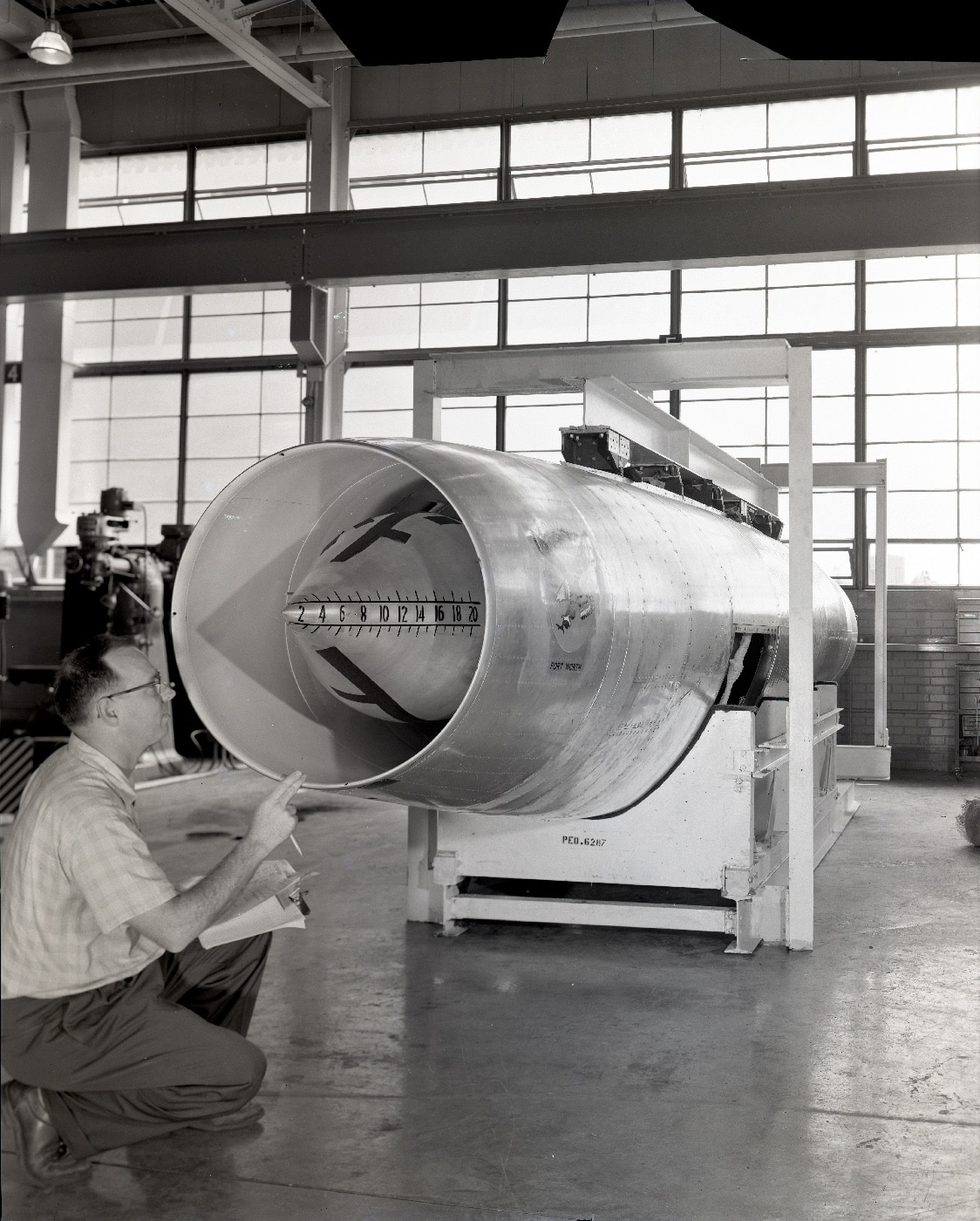
The B-58 Hustler was powered by four General Electric J79 turbojet engines. One is shown here during B-58 development and testing. Image: Bill Bowles/NARA
The fuselage accommodated three crewmembers, but only just.
Because of the planes cramped architecture, there was no room for superfluous features.
Extra fuel and a single thermonuclear bomb rode in a large external pod mounted along the centerline.

Strategic Air Command was responsible for the strategic bombers in the United States Air Force. Here a Convair B-58 Hustler alert crew scramble on an unannounced readiness test. Image: U.S. Air Force
This conversion involved adding a further four external hardpoints for four more atomic bombs.
The B-58 was never intended to be used as anything other than a nuclear delivery vehicle.
A Wee Bit of Science with Nuclear Weapons
Nuclear weapons come in two broad flavors.
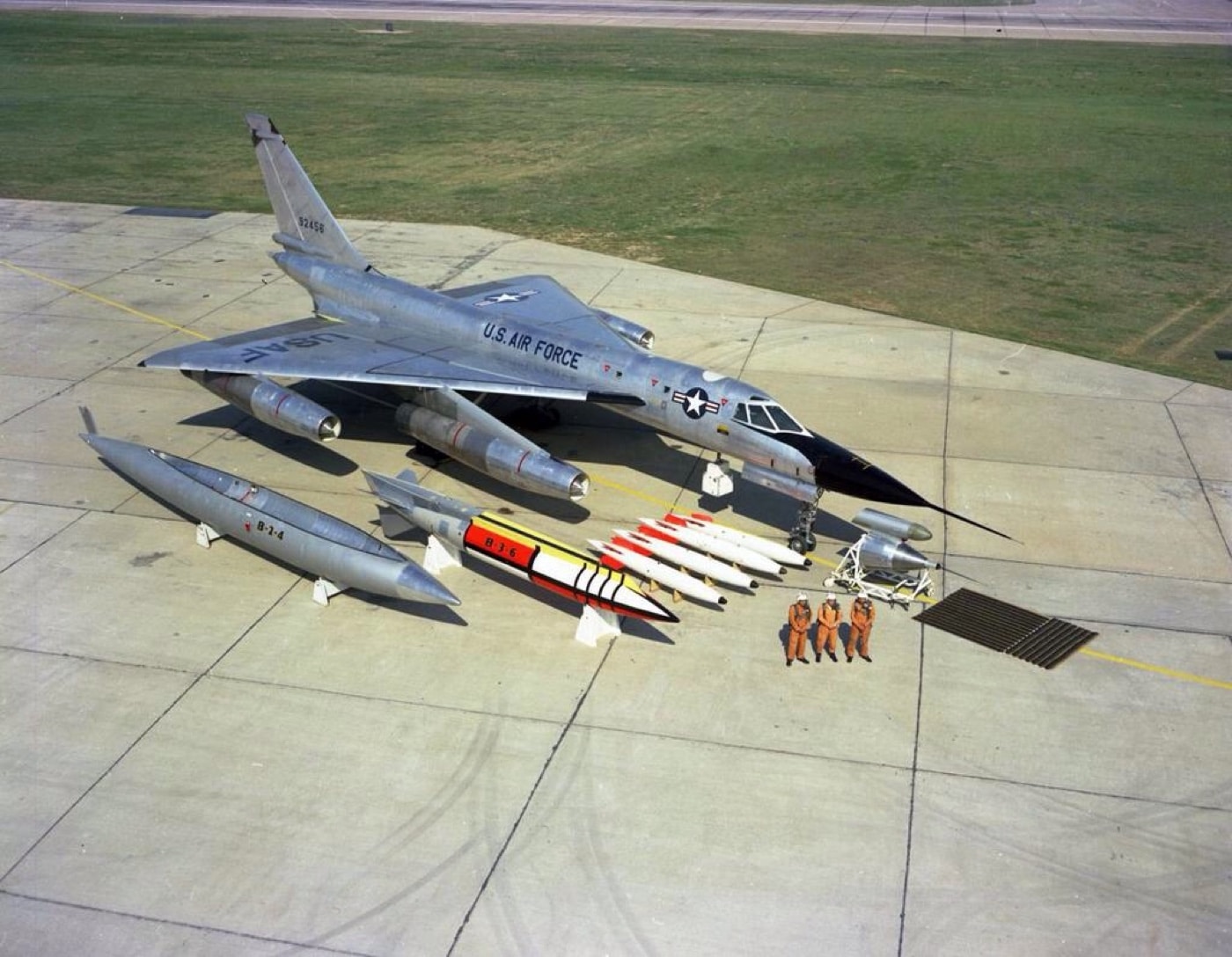
The Convair B-58 Hustler was built to deliver nuclear weapons. It is shown here with a maximum nuclear payload. Image: U.S. Air Force
Fission-based bombs operate using uranium or plutonium as fuel.
The bomb dropped on Hiroshima was a uranium-based weapon.
The Nagasaki gadget utilized plutonium.
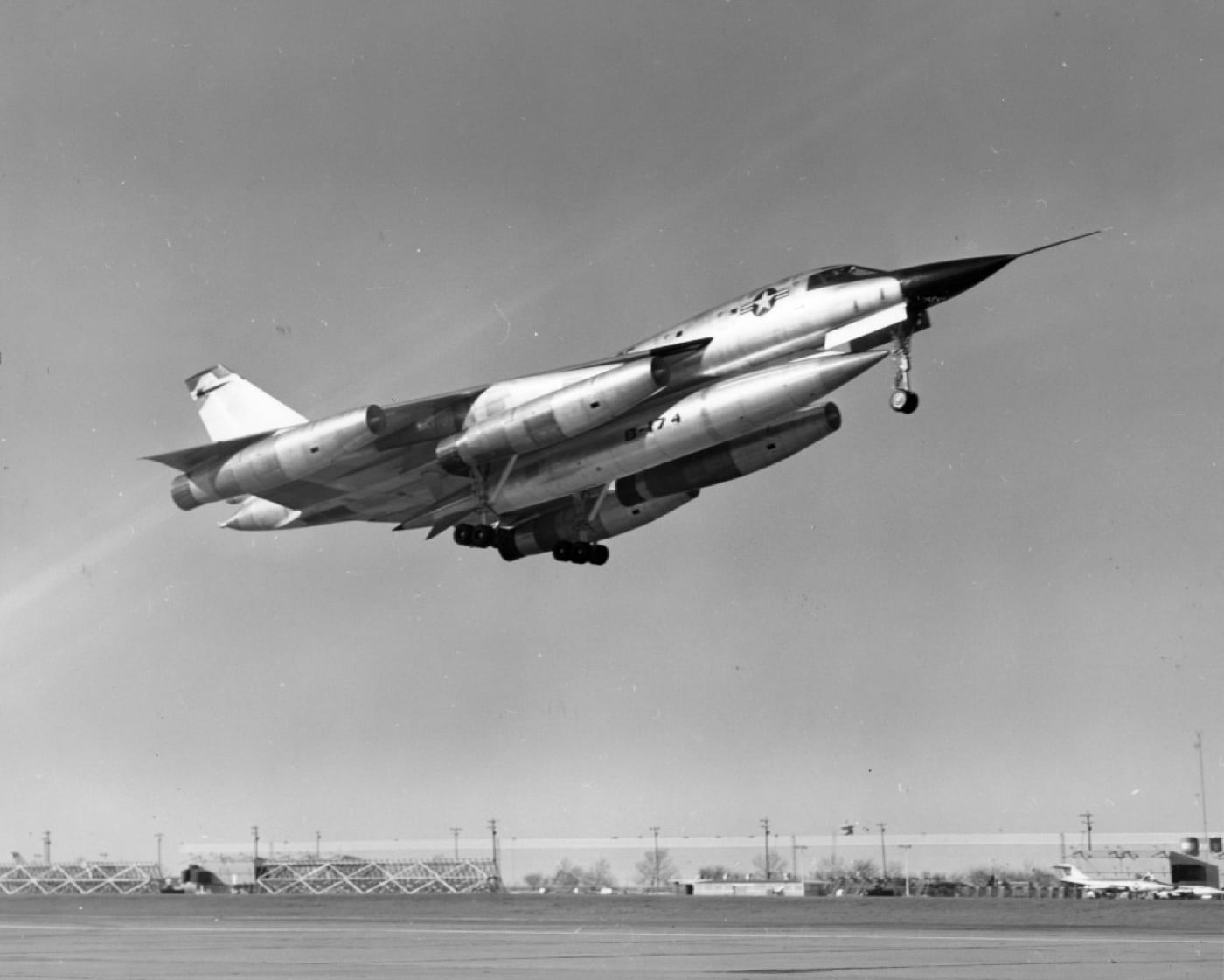
The B-58 had a published maximum speed of Mach 2.0 and a service ceiling of 63,400. In reality, pilots were able to exceed both of those. Image: San Diego Air & Space Museum/U.S. Air Force
These two bombs operated by splitting larger atoms into smaller ones.
By contrast, the B53 weapon carried by the Hustler was a thermonuclear rig.
This is the same reaction that powers the sun.
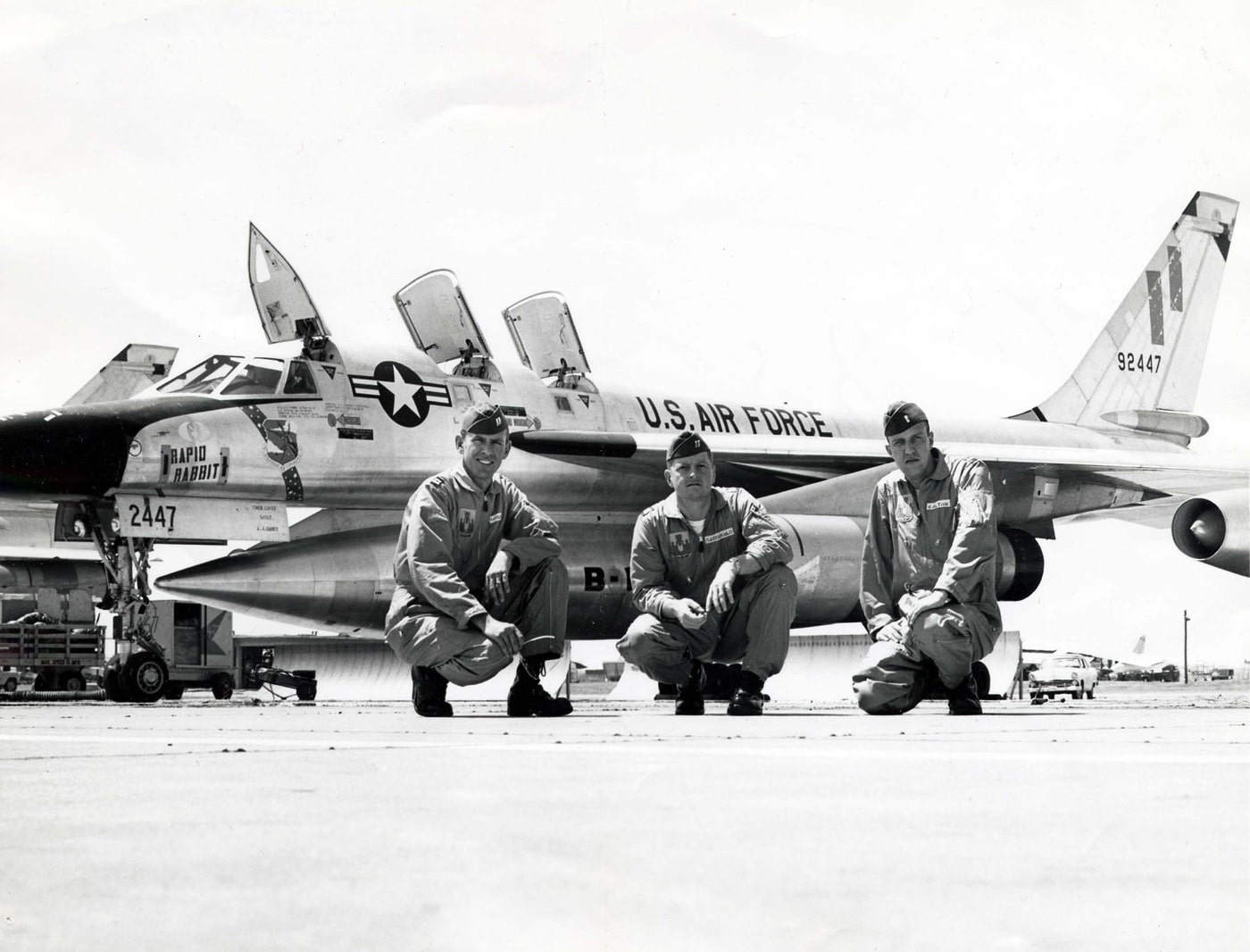
The Convair B-58A Hustler had an aircrew of three aligned in a row. Only the pilot had a view. Image: U.S. Air Force
The B53 bomb had a nominal yield of around nine megatons, or nine million tons of TNT.
One B53 thermonuclear weapon was the equivalent of detonating some 562 Hiroshima bombs at the same time.
Thankfully, these massive planet-wrecking devices have never been used for real.
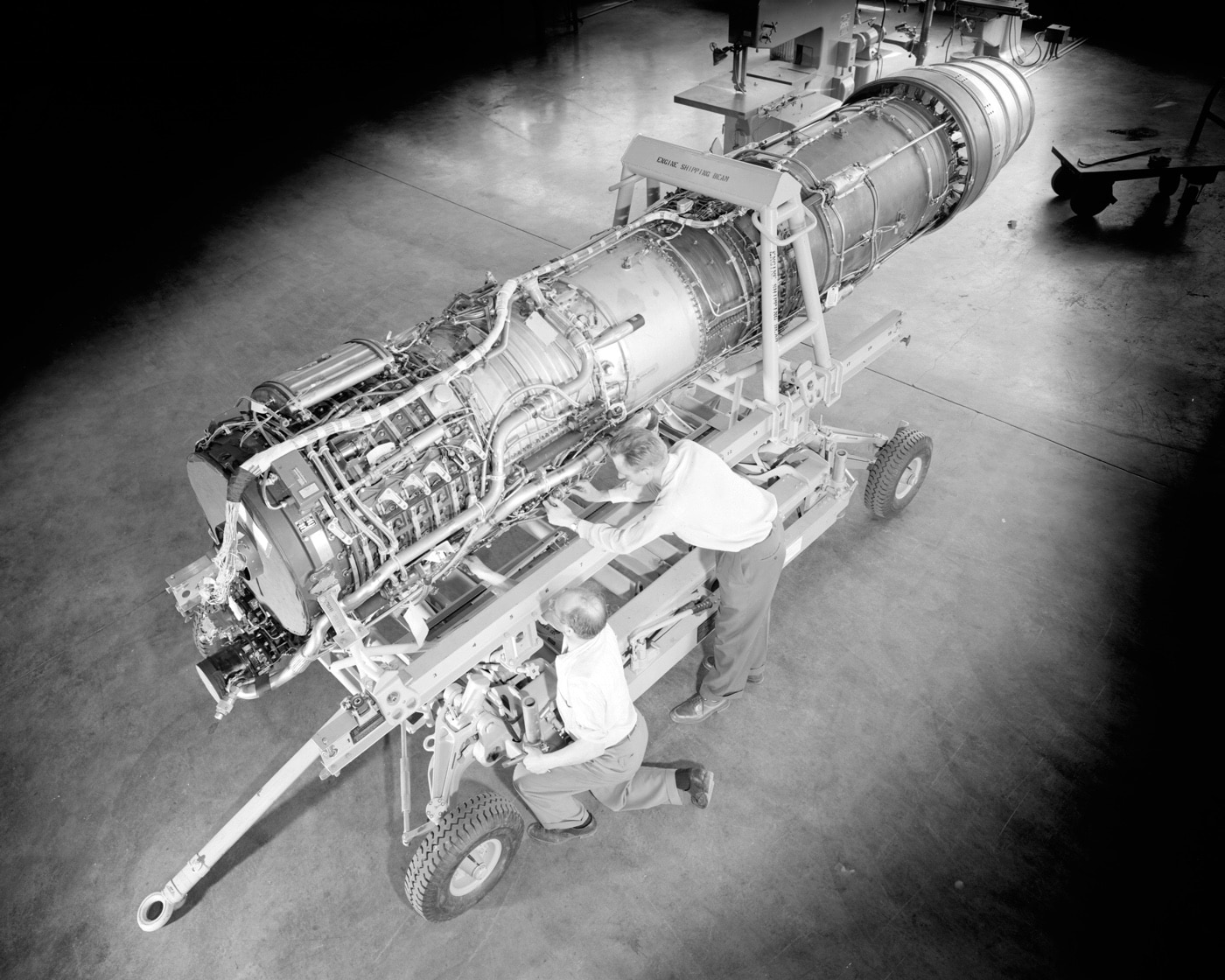
Four of the General Electric J79 engines, as seen here, powered the Convair B-58 Hustler well past the speed of sound. Image: U.S. Air Force
The aircraft was powered by four General Electric J79 afterburning turbojet engines.
This was the same powerplant used on theLockheed F-104 Starfighterand theMcDonnell Douglas F-4 Phantom IIfighters.
Designated the NB-58A, one of the pre-production YB-58A Hustlers was refitted to test the General Electric J93 engines.
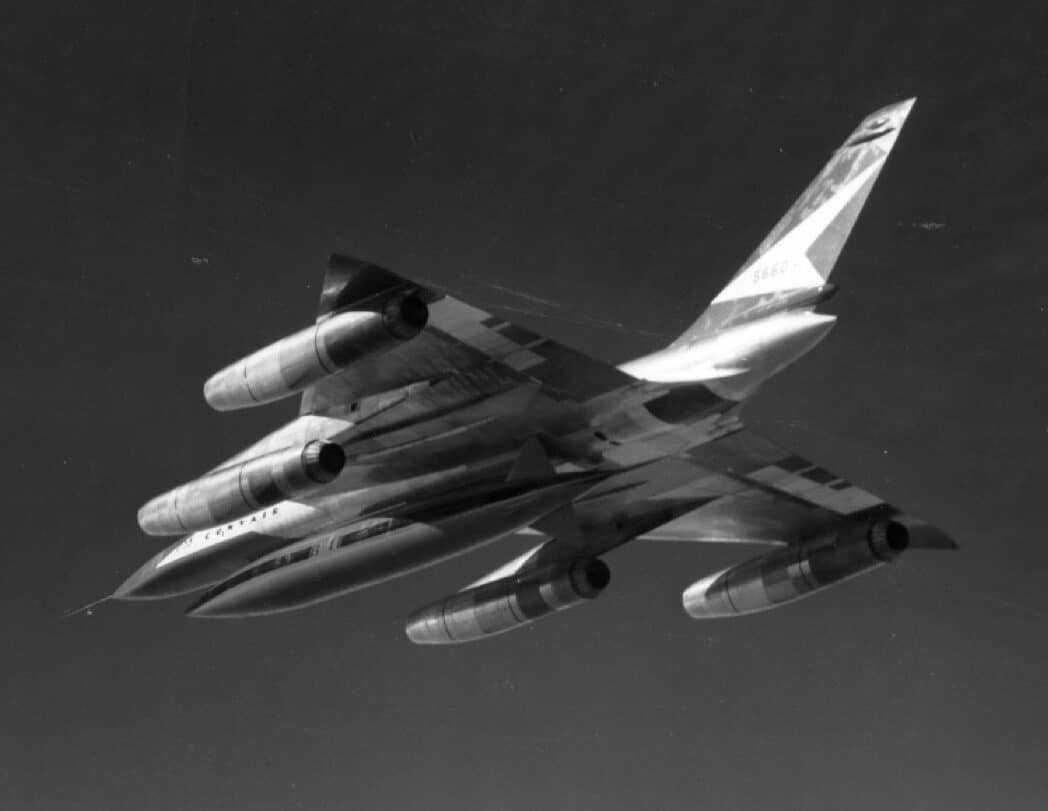
This 7 o’clock low view of the B-58 shows the plane’s four powerful engines. Image: U.S. Air Force
The J93 was the same jet engine used in the Mach 3+North American XB-70 Valkyriebomber.
The B-58 cost a third more per flying hour to operate than did the massive eight-engineB-52 Stratofortress.
Long-range missions required extensive tanker support.
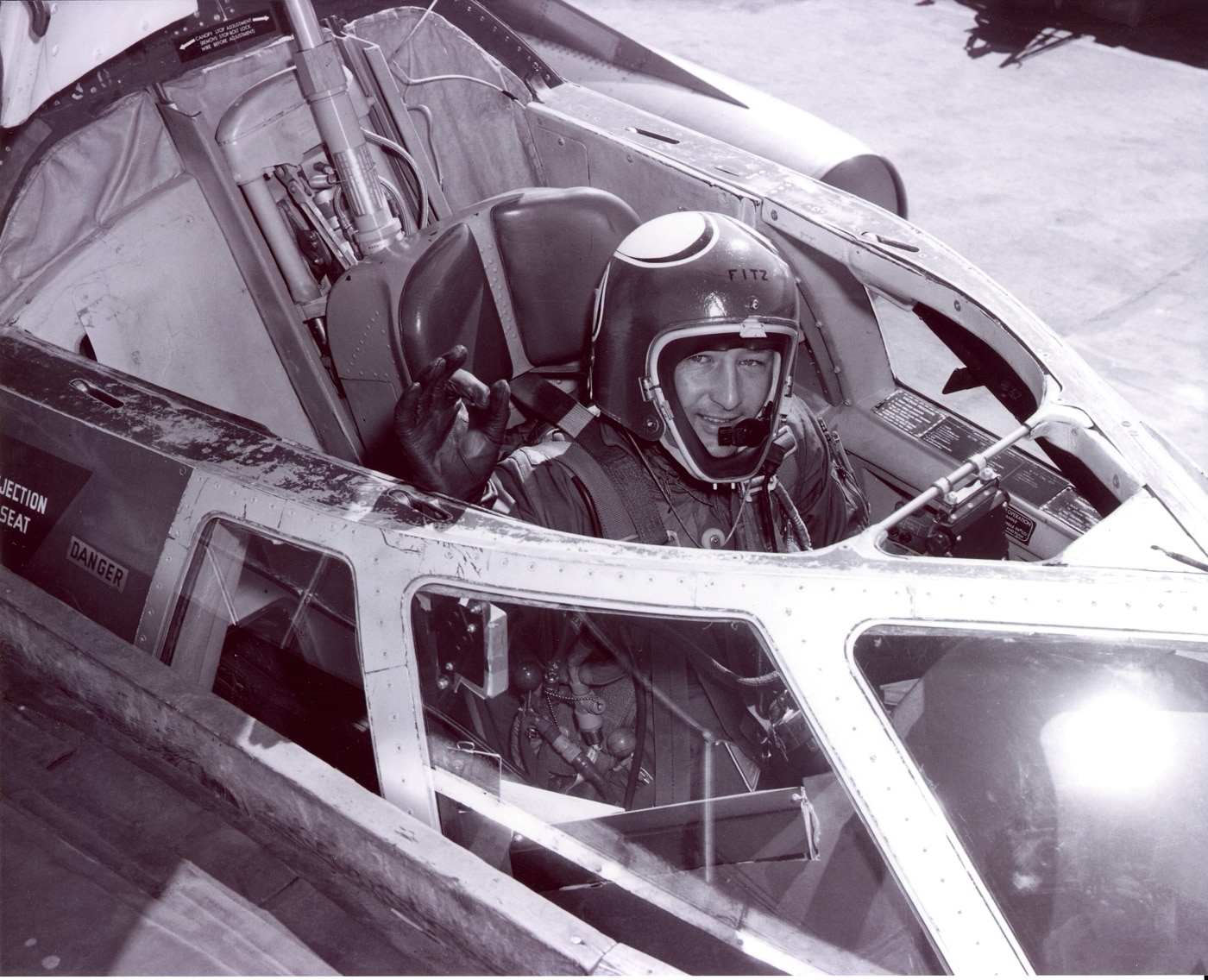
On Sept. 8, 1962, Maj. Fitzhugh “Fitz” Fulton piloted a B-58, carrying an 11,023-pound payload to an altitude of 85,360 feet — a record that still stands today for this category of plane. Image: U.S. Air Force
However, it was tough to argue with the planes performance.
The B-58 set 19 different cross-country speed records, some of which remain in place today.
The plane demanded an excessively high angle of attack to maintain control, particularly at low speeds.
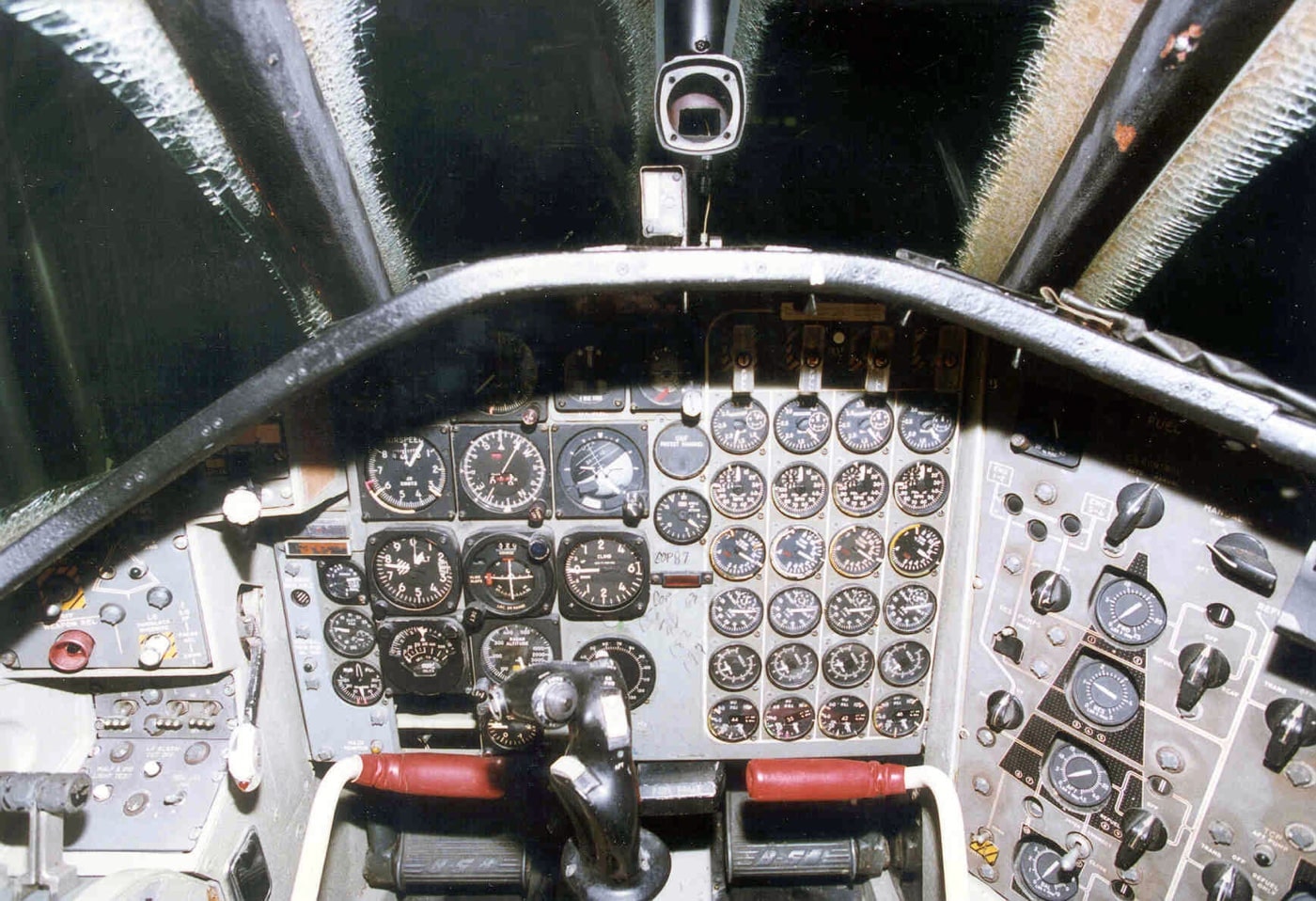
This is a look at the Convair B-58A Hustler “Cowtown Hustler” cockpit at the National Museum of the United States Air Force in Dayton, Ohio. Image: U.S. Air Force
If that angle surpassed 17 degrees, the plane would pitch up and spin.
At any altitude below 15,000 feet, a spin was considered unrecoverable.
An unrelated problem was called fuel stacking.
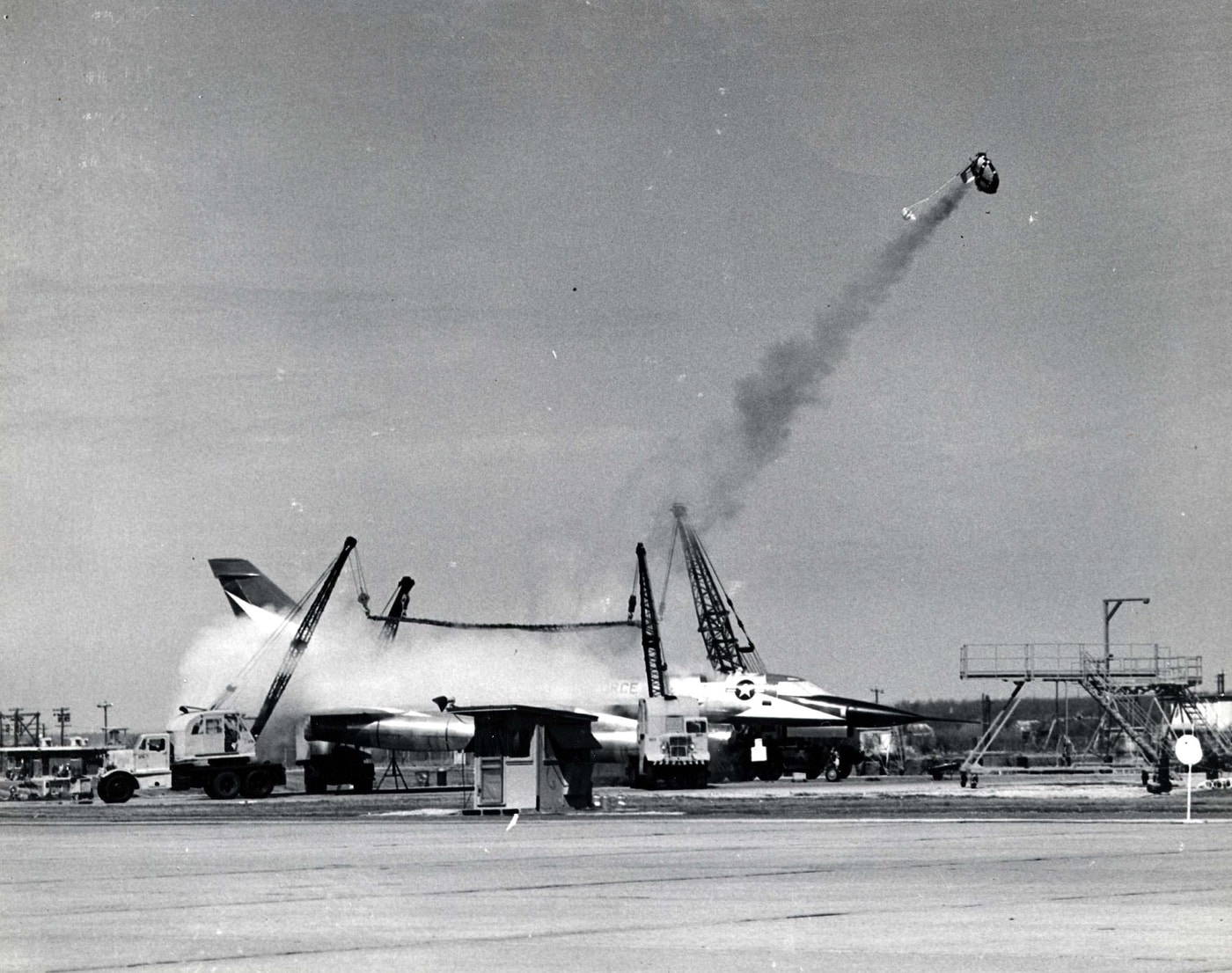
A Convair B-58 capsule ejection static test from the XB-58. The capsule was designed for ejection at high altitude and speed. Image: U.S. Air Force
For its era, the B-58 reflected the state of the art.
That included taped cockpit voice warnings.
The Northrop Corporation hired actress and singer Joan Elms to record the planes audio warnings.
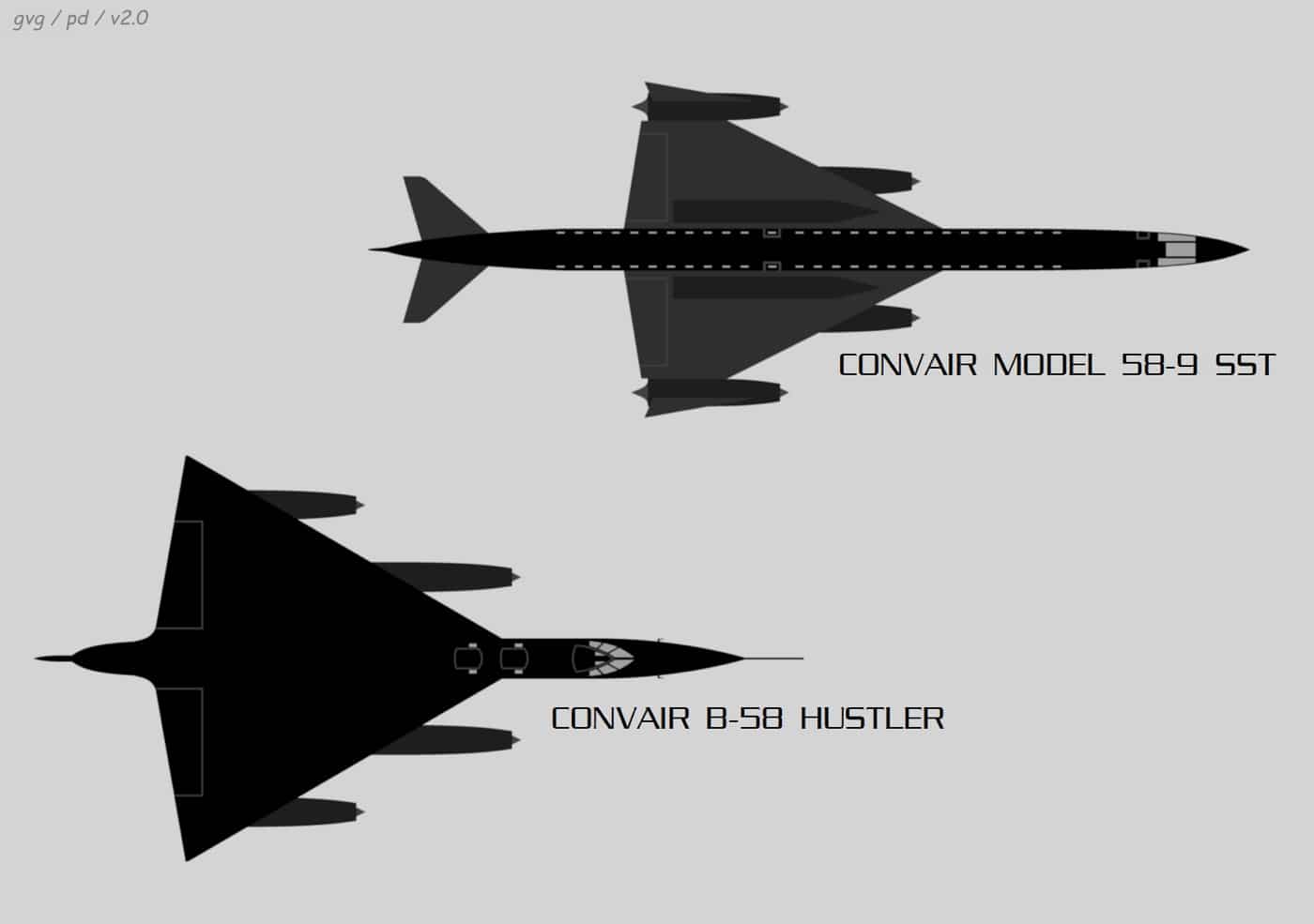
The Convair Model 58-9 SST was intended to be a supersonic passenger plane that could transport 52 people at a cruising speed of Mach 2.4. It was never built. Image:Greg Goebel/CC BY-SA 2.0
B-58 crews came to refer to the planes sultry voice as Sexy Sally.
Their solution was a clamshell capsule that snapped shut around the airman prior to ejection.
This capsule could then be used as a canoe of sorts in the event of a water landing.
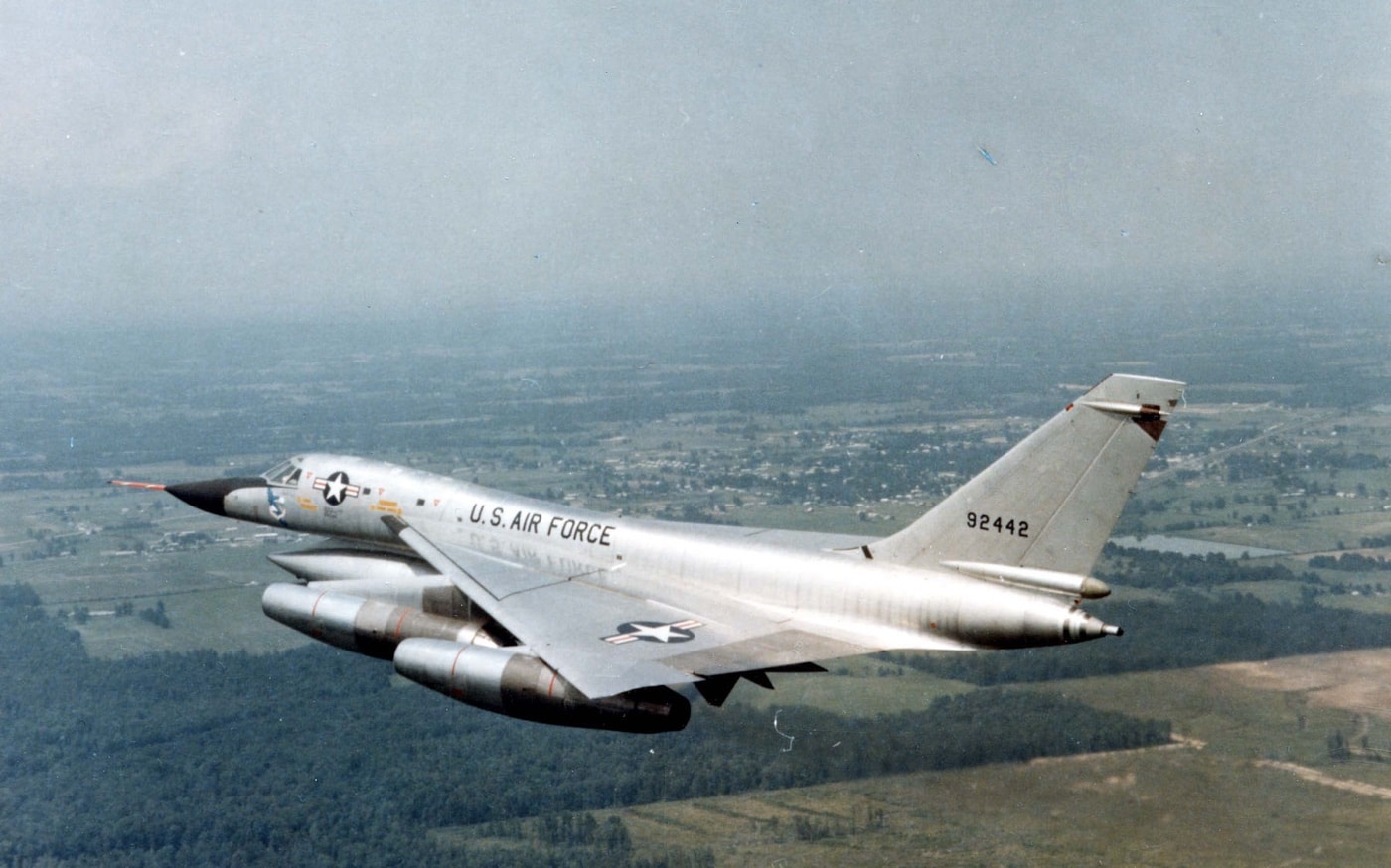
The Convair B-58 Hustler supersonic strategic bomber became largely obsolete with the introduction of the Soviet SA-2 Guideline (S-75 Dvina) surface-to-air missile system. Image: U.S. Air Force
In fact, in 1963, a bear became the first living creature to survive a supersonic ejection.
It was obviously a different time.
I somehow doubt PETA would respond favorably to such stuff today.
In the absence of global thermonuclear war, this highly-advanced plane was essentially worthless.
However, the Hustler was a gleaming example of advanced Space Age Cold War tech.
Fast, sleek, deadly, and terribly unforgiving of inattention, the B-58 was indeed an amazing machine.




